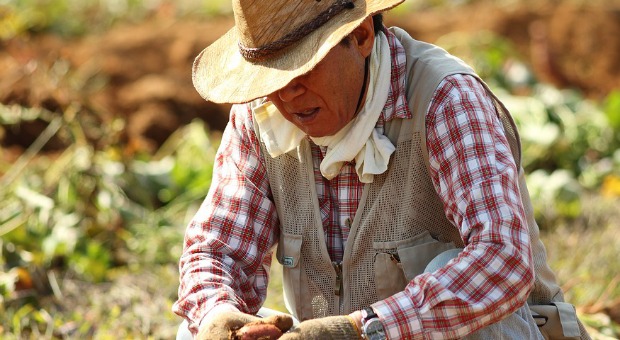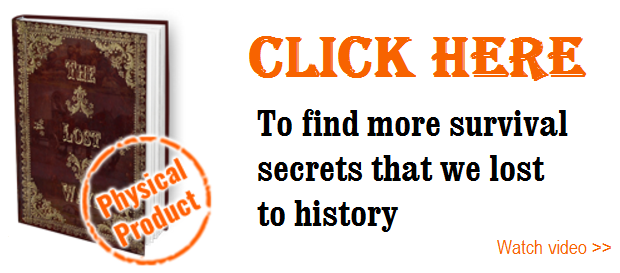People strive for independence from big government for different reasons. Maybe you’re a “traditional” prepper who is worried about, and preparing for, a future disaster. Until then, you may be perfectly happy living with all of the modern conveniences. On the other hand, you may be seeking to be self-sufficient today and in the future.
Some people do this because they’re concerned about the planet. Others may do it in order to be able to feed themselves without depending on the government or grocery stores. Maybe you’re worried about all of the chemicals used in commercial farming. Or maybe it’s a combination of all of these.
I consider myself to be resilient. The old analogy “watch your pennies and the dollars will take care of themselves” applies here. I’m taking care of myself and my family today in ways that will insure that we will be able to take care of ourselves in the future, even when fragile food systems may fail. Survival is built into everything I do – I just call it being self-sufficient, present, and forward-thinking.
There are many reasons you may want to be self-sufficient, or resilient, but many of the basic tools and knowledge that you need will be the same regardless of your reason. And I’m here to tell you that as long as you have a little space, you can grow enough food to survive.
Entire communities are developing around this principle. That may seem counterproductive, but it’s really not because every household is practicing home food production and is moving away from dependence on outside manufactured products.
The entire community will be relatively unaffected should commercial foods become unavailable due to cost or disaster because they’re already growing everything they need. They may even profit because at that point, they’ll basically command the market. Of course, profit is only a side benefit, not the reason that people choose to live resiliently, but it’s there.
Learn from our ancestors the old lessons of growing your own food!
Three common resilient goals
Gardening without chemicals
Find gardening methods that don’t require commercial fertilizers or chemical insecticides/pesticides. These include composting, permaculture, and growing your own food.
Growing meat at home
You’re going to need protein, as well as (possibly) furs to keep you warm and leather to make shoes, etc. One resilient solution to raising cattle, sheep, etcetera, is to raise animals that are more efficient such as rabbits and chickens.
Finding renewable energy solutions
Dependence on the power grid is probably the single most way that the government has most of us hamstrung. Finding ways to use renewable energy from the sun, wind, and water to power our homes is a clean solution to the energy crisis that we’re facing even as I write this. It’s also the one step that you’ll have to take if you’re shooting for total self-sufficiency.
Skills that you’ll need to be resilient
Just the definition of “resilient” pretty much sums up the skills that you’ll need to become self-sufficient. You’ll need to be able to adapt and find solutions to both immediate and long-term problems.
Roll with the punches and find a way to fix things over the long haul. Other synonyms, or words closely related to resiliency, include flexibility and adaptability, and they certainly apply. I’ll throw patience and consciousness in for good measure.
You also need to shift your strategy to the long game, if you haven’t already. This simply means that you’re looking to make changes today that will leave you relatively unaffected by outside changes, and self-sufficient to the greatest degree that your situation will allow.
Finally, you need to be able to recognize, and admit, that you’ve failed. This isn’t so that you can give up; you need to know so that you can start over without wasting valuable time and resources.
Those are the basic personality traits you’ll need, so now let’s talk about technical skills. This part is the easy oane because there is very little about becoming self-sufficient that you can’t learn, either from personal experience or from the experience of others. It’s not possible to know too much.
Gardening skills:
- Learn everything you can about your plants before you even buy the seeds.
- Make a list of plants that you’d like to grow, then find out if they grow in your zone.
- Learn the size of the plants that you want to grow and choose wisely according to the space that you have available.
- Know the sunlight needs of your plants. This is important, because photosynthesis is a critical part of growth.
- If you’re planting in the ground, know at least the basics about your soil, and match that to the needs of your plants.
You can pretty much apply these rules to raising animals, too.

Start Your Resilience with Growing Food
Resiliency isn’t about just gardening, but that’s a good place to start because you can do it from anywhere and with next to no money.
Gardening is relatively simple as long as you know the needs of your plants, and can be done for next to nothing with relatively little space. If you’re growing a container garden or even a vertical garden, you can do so in small containers, or in 5-gallon buckets. There are many different articles that I’ve written about this topic and I’d recommend that you read some of them, and even print what you think may be useful to you.
Now that you’ve studied the plants and made sure that you have the space to grow them, it’s time to get started.
It’s always best to use heirloom seeds, because those are the ones that are going to give you the same plant every season. In other words, if you plant a beefsteak tomato plant from the seeds of last year’s beefsteak tomato plant, you’re going to get the same fruits. Open pollinated plants would be next choice. Hybrid plants aren’t reliable from one season to the next, so just skip them.
The next thing you’ll need is containers. You can buy 5-gallon buckets at Home Depot, but you can get them for free from restaurants and bakeries. They buy their food in bulk, then throw away their buckets. If you’re growing tomatoes or other vining plants, you’ll need stakes or trellises.
Finally, you just need your seeds and soil. The soil, of course, depends on what you’re growing, but should consist of a combination of compost and soil. Sand is often good to mix in, too, especially if you live in an area that has a clay-based soil.
These are extremely general tools, but if you have these basic components available to you, you can grow your own food.
As always, knowledge is power and when you’re working to feed yourself, it’s much better to learn from the mistakes of others than to have to learn from your own.
In summary, there are many techniques that resilient people utilize and work into their daily lives in order to be self-sufficient today, and in the future.
The goal is to live in pretty much the same manner after the disaster as we did before it, because we remain unaffected. Back in the days, our ancestors knew how to do it. It’s time to go back to our roots and uncover their secrets that helped them survive harsh times.
Click the banner below for more!
Are you making these steps to self-sufficiency? Why did you chose to be resilient?
If you live a resilient, self-sufficient lifestyle, or are trying to, tell us about some of your efforts in the comment section below. If you have any questions, please feel free to ask those, too!
This article has been written by Theresa Crouse for Survivopedia.











































































Tomatoes, zucchini, lettuce, peppers, and green beans have very few calories. They are good for a weight loss diet, but not for contributing a substantial number of calories to your diet. If you are gardening in order to buy less groceries, you want high calorie veggies; and there aren’t many. Potatoes, sweet potatoes, winter squash (including the roasted seeds), parsnips, kale, dried beans (legumes), dried corn (corn flour or corn meal), garlic, and leeks will all provide enough calories to keep you alive. They are also make very efficient use of space in a garden, returning the highest number of calories in the smallest space. All other veggies will provide vitamins and minerals that will keep you healthy, but not enough calories to keep you alive. It’s a balancing act based on garden space, growing zone, and access to foods purchased from commercial sources. Learning to grow cold weather/winter veggies is also a great benefit.
Question: What would an EMP do to a solar panel?
Question: what would an EMP do to a solar panel?